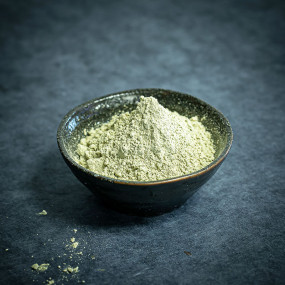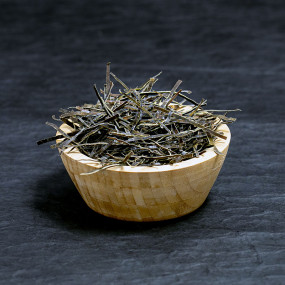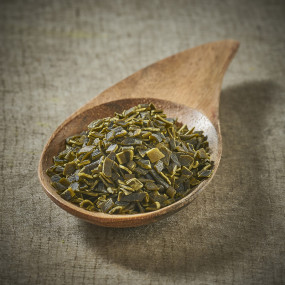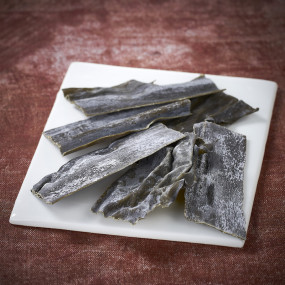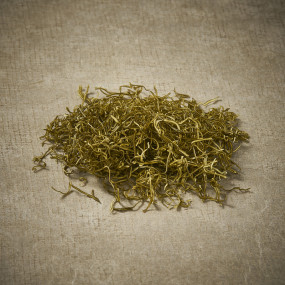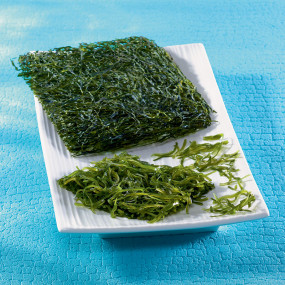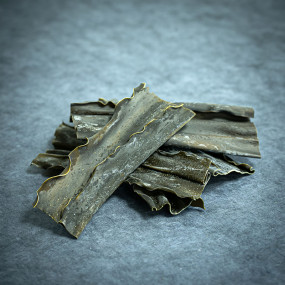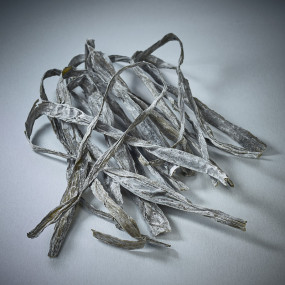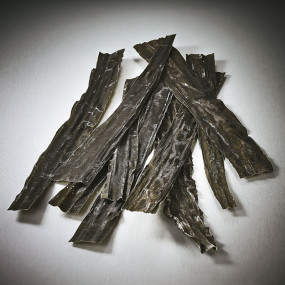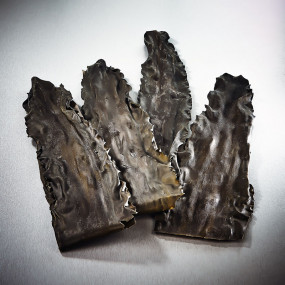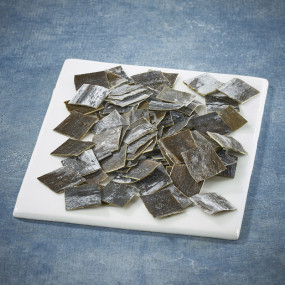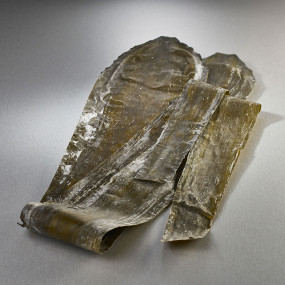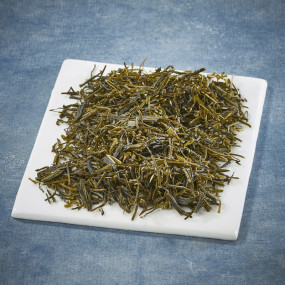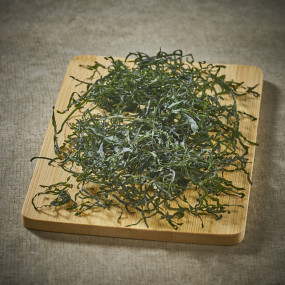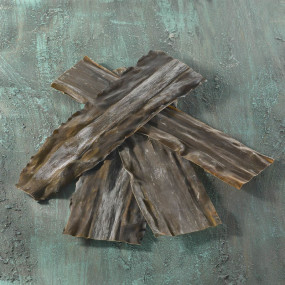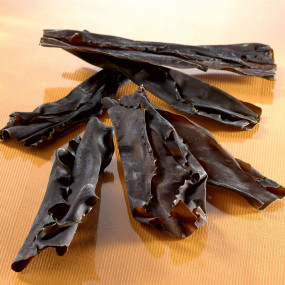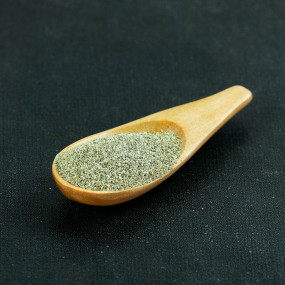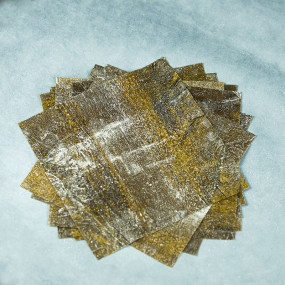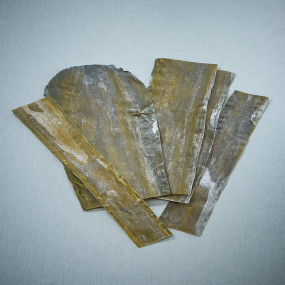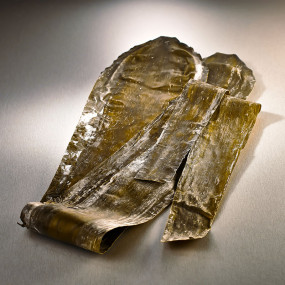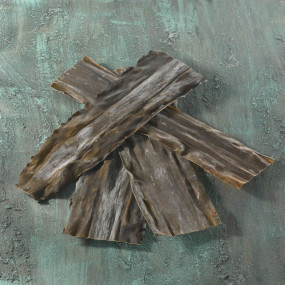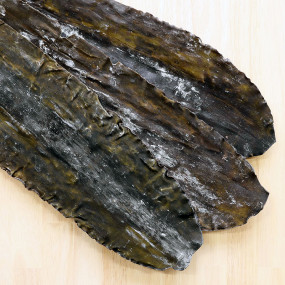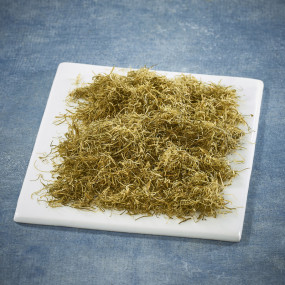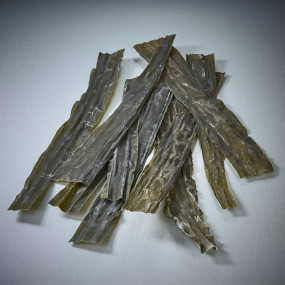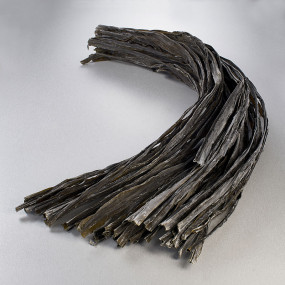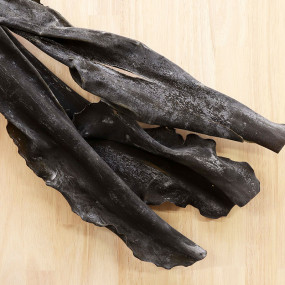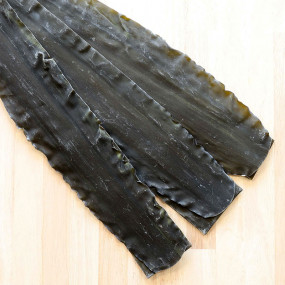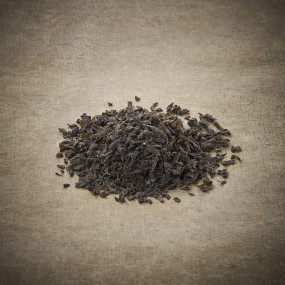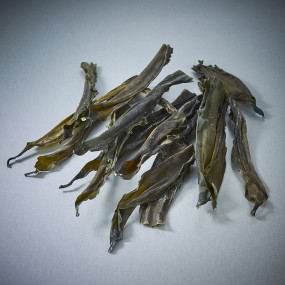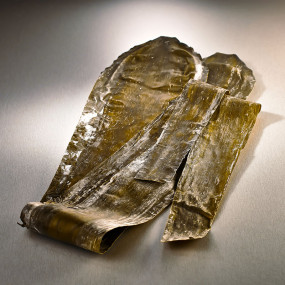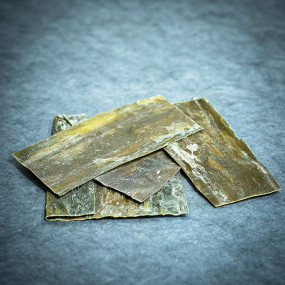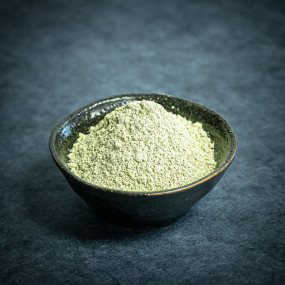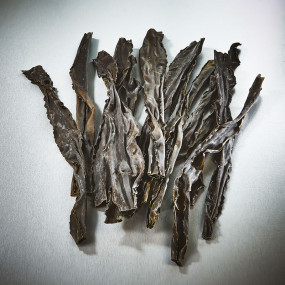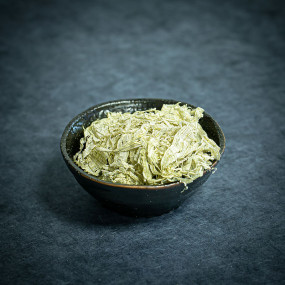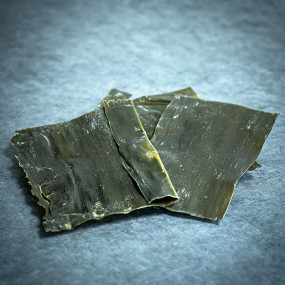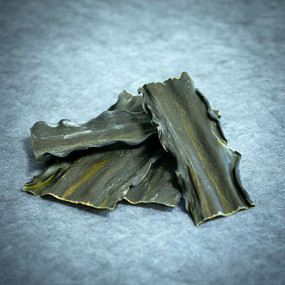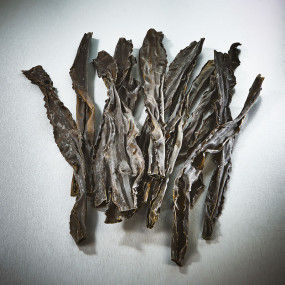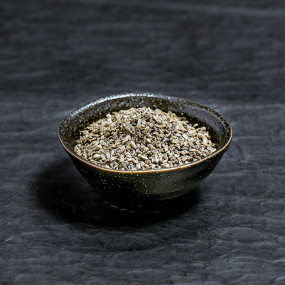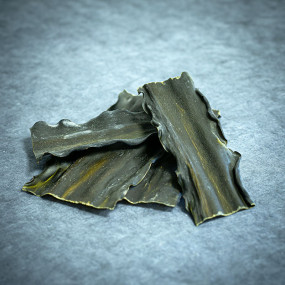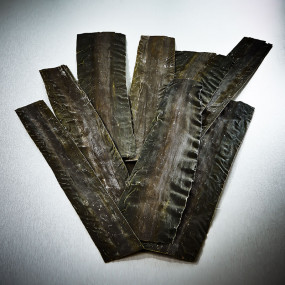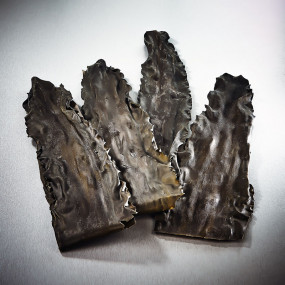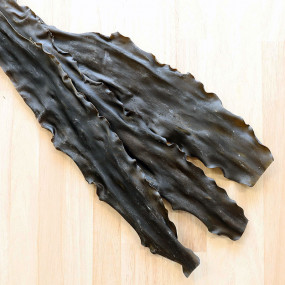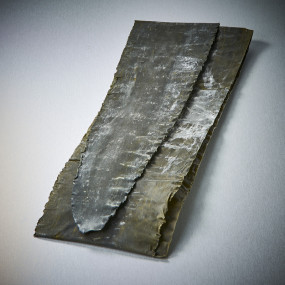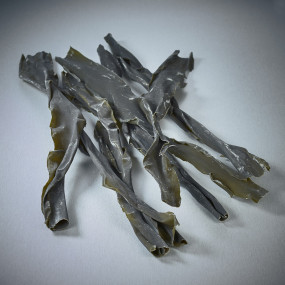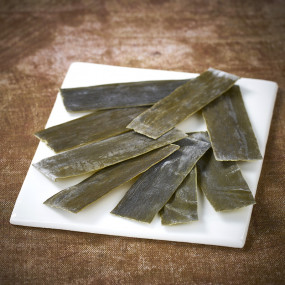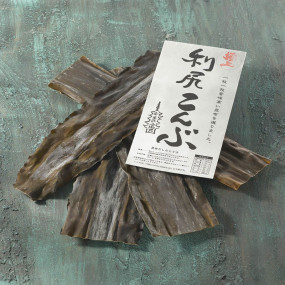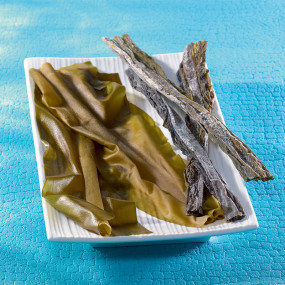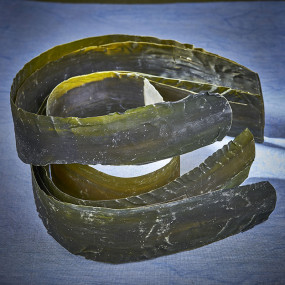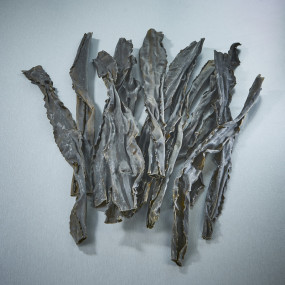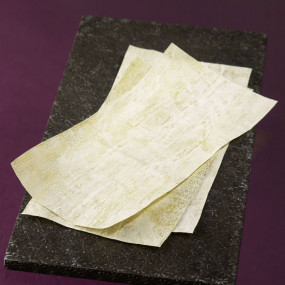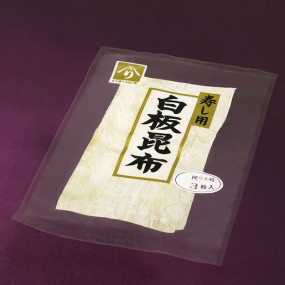Kombu
History of Kombu and Kombu Road
Kombu seaweed from Hokkaido has been distributed throughout Japan for centuries and is an important commercial issue. Kombu seaweed harvested in Hokkaido were previously transported by boat, moving westward along the coast of Sea of Japan to Osaka, a commercial center since that time. For this reason, wholesalers and processors of kombu seaweed are found mainly in or around Osaka. The route the kombu took from Hokkaido to its destination is called the Kombu road. It extends to China via Okinawa.
The different kombu seaweed in Japan
Kombu algae are found in many countries around the world, including Japan, Russia, China, the Tasmanian Islands, Australia, South Africa, the Scandinavian Peninsula and Canada. In Japan, most of the kombu is harvested in Hokkaido, accounting for about 90% of total production. The waters of the Arctic Ocean that derive from Siberia to Hokkaido are rich in minerals and provide an environment that produces delicious kombu. The equipment used in Japan to dry kombu seaweed in the sun meets the most demanding sanitary standards, making Japanese kombu particularly popular worldwide.
-
Rausu Kombu powder
- In stock
From €9.50Rausu kombu has a very soft fiber and is known for its broad and fine shape. When soaked in hot water, it gives a slimy, gooey texture and a rich umami flavor.
-
Dried kombu seaweed, julienne cut
- In stock
From €10.00This kombu julienne is made from Hombaohirama kombu, a very long and wide seaweed.
This minced kombu seaweed, with light iodine notes, offers a very pleasant crunch.
It can be eaten hot or cold. Simple and quick to cook, kombu is an accompaniment. Simmered, it is satiating despite a very low number of calories.
In Japan, it is called "kiri konbu". -
-
Oni or Rausu Kombu seaweed
- In stock
From €6.05Rausu Kombu is fragrant and sweet, producing a rich broth, with the typical color of the seaweed.
-
Shredded Kombu seaweed
- In stock
From €5.30Shredded Kombu seaweed.
The flavors are natural, the texture is crispy. -
Hokkaido Sômen Kombu seaweed
- In stock
From €9.60Sômen Kombu, a real sea delight, are very young spring seaweeds, of just a year old.
-
Hidaka Kombu seaweed
- In stock
From €5.50Hidaka kombu has soft fibers and is usually whole. This whole kombu is used for simmered dishes, Kobumaki (rolled kombu filled with cooked fish) and tsukudani condiments (kombu candied in a mixture of soy sauce, mirin, sake, sugar). It can create a darker brown, less sweet dashi with a strong kombu taste.
-
-
Wild kombu seaweed from the Rishiri and Rebun islands,...
- In stock
From €83.00Kombu proposed here comes from the islands of Rishiri and Rebun, located in the north of Hokkaido Island, renowned for their wild kombu, the rarest and most qualitative in the world.
-
Wild kombu seaweed from the Rishiri and Rebun islands,...
- In stock
From €115.00Kombu proposed here comes from the islands of Rishiri and Rebun, located in the north of Hokkaido Island, renowned for their wild kombu, the rarest and most qualitative in the world.
-
Kagugiri ma kombu seaweed
- In stock
From €5.95The ma kombu seaweed is here cut into small squares with 2 cm sides.
-
Premium Rausu Kombu seaweed
- In stock
From €100.00Rausu Kombu we propose here is grown in Hokkaido: it is Hokkaido Rausu Kombu.
-
Kizami shredded kombu seaweed
- In stock
From €65.20This grated kombu seaweed, with light iodine notes, offers a very pleasant crunch.
-
Soft Kombu Seaweed salad from Hokkaido
- In stock
From €16.35The kombu used for this seaweed salad is a soft kombu, spaghetti shape. The flavors are delicately iodized, natural, the crunchy gourmand.
-
-
Wild Rishiri Kombu seaweed
- In stock
From €194.00These wild Rishiri Kombu seaweeds are cropped along the shores of Rishiri Island in Hokkaido. Their quality is recognized throughout Japan and beyond.
-
Dried Kombu seaweed for Ma Kombu dashi stock
- In stock
From €20.35Ma kombu is the most appreciated and used kombu in Japan.
-
Seasoned grated Kombu seaweed
- In stock
From €15.85This finely grated kombu is made from the best Oni kombu (Saccharina Japonica) from Hokkaido, which are dry-aged for a long time and then finely ground to bring out their Umami taste immediately.
-
Kombu seaweeds leaves for kombujime
- In stock
From €169.00Kombujime is a technique used to enhance fish sashimi taste by aging the fish between two sheets of Kombu seaweed.
This technique is generally applied to white flesh fish (sea bream, sea bass, snapper, flounder...). -
Cultivated Rausu kombu seaweed Extra grade
- In stock
From €137.00With its strong umami flavor and the most pronounced flavor among kombu, Rausu's kombu makes a slightly sweet broth.
-
Rausu Kombu powder
- In stock
From €9.50Rausu kombu has a very soft fiber and is known for its broad and fine shape. When soaked in hot water, it gives a slimy, gooey texture and a rich umami flavor.
-
Wild Rausu kombu seaweed
- In stock
From €96.00Rausu kombu has a very soft fiber and is known for its broad and fine shape. When soaked in hot water, it gives a slimy, gooey texture and a rich umami flavor. Rausu creates a very richly flavored dashi, with a darker brown color than Rishiri or Makombu dashi.
It is well used for Kobujime (raw fish refined by wrapping it in kombu) and Kobumaki (kombu rolls filled with cooked fish). -
Unsorted wild Rishiri Kombu seaweed
- In stock
From €144.00These wild Kombu seaweeds were cropped along the seashores of Rishiri Island in Hokkaido.
-
Wild Honbaorihama Ma Kombu Premium seaweed from Hokkaido
- In stock
From €205.00Honbaorihama's makombu is of very high quality, rare, and considered an exceptional product and is among the top three kombu in Japan.
-
Kuro tororo kombu seaweed
- In stock
From €66.25This black shredded kombu seaweed heart is emblematic of Toyama. Families consume it daily.
-
Rishiri kombu seaweed
- In stock
From €96.00Rishiri kombu seaweed is consistently acclaimed by demanding Chefs.
-
-
Wild Kurokuchihama Ma Kombu Premium seaweed from Hokkaido
- In stock
From €171.00Kurokuchihama's makombu is of very high quality, rare, and considered an exceptional product and is among the top three kombu in Japan.
-
Wild Shirokuchihama Ma Kombu Premium seaweed from Hokkaido
- In stock
From €211.00Shirokuchihama's makombu is of very high quality, rare, and considered an exceptional product and is among the top three kombu in Japan.
-
Shio Kombu seaweed flakes
- In stock
From €73.00Shio Kombu is finely dried and minced kombu seaweed after being cooked in soy sauce, with salt and sugar, sometimes mirin.
The strips of Shio Kombu were cut here in flakes. -
Hidaka kombu seaweed
- In stock
From €67.50Hidaka kombu seaweed, harvested south of Hokkaido, is a soft kombu, with sweet and iodized flavors.
-
-
Wild Rausu kombu seaweed, EXTRA quality
- In stock
From €96.00(2 reviews)Rausu kombu has a very soft fiber and is known for its broad and fine shape. When soaked in hot water, it gives a slimy, gooey texture and a rich umami flavor. Rausu creates a very richly flavored dashi, with a darker brown color than Rishiri or Makombu dashi.
It is well used for Kobujime (raw fish refined by wrapping it in kombu) and Kobumaki (kombu rolls filled with cooked fish). -
-
Rausu kombu seaweed
- In stock
From €7.20Rausu kombu has a very soft fiber and is known for its broad and thin shape. When soaked in hot water, it gives a slimy, gooey texture and a rich umami flavor. Rausu creates a very richly flavored dashi, with a darker brown color than Rishiri or Makombu dashi. It is well used for Kobujime (raw fish refined by wrapping it in kombu) and Kobumaki (kombu rolls filled with cooked fish).
-
Rishiri Kombu seaweed
- In stock
From €6.35Rishiri Kombu is sweet, saltier and harder than ma-kombu. Its dashi broth is rich, tasty and clear.
-
Rishiri and Rebun Islands kombu powder
- In stock
From €9.50Kombu offered here comes from the islands of Rishiri and Rebun, located in the north of Hokkaido Island, renowned for their wild kombu, the rarest and most qualitative in the world.
-
Wild Hidaka Kombu seaweed, PREMIUM quality
- In stock
From €66.00Hidaka kombu has soft fibers and is usually whole. This whole kombu is used for simmered dishes, Kobumaki (rolled kombu filled with cooked fish) and tsukudani condiments (kombu candied in a mixture of soy sauce, mirin, sake, sugar). It can create a darker brown, less sweet dashi with a strong kombu taste.
-
Tororo kombu seaweed
- Available soon
From €8.80OKUI KAISEIDO's Tororo Kombu Seaweed is made from the finest Rausu Kombu. Rausu kombu has a very soft fiber and is known for its wide and thin shape. When soaked in hot water, it gives a slimy, gooey texture and a rich umami flavor.
-
Hidaka Kombu seaweed
- Available soon
From €5.50Hidaka kombu has soft fibers and is usually whole. This whole kombu is used for simmered dishes, Kobumaki (rolled kombu filled with cooked fish) and tsukudani condiments (kombu candied in a mixture of soy sauce, mirin, sake, sugar). It can create a darker brown, less sweet dashi with a strong kombu taste.
-
Ma kombu (Yamadashi) from Donan
- Available soon
From €6.20Ma kombu is a high quality kombu like Rishiri or Rebun. Its fiber is softer than Rishiri. It is mainly used in Osaka area, while Rishiri is popular in Kyoto. Makombu dashi has a rich golden color and a mild, sweet flavor.
-
Kura-gakoi cellar-aged kombu from Rishiri and Rebun islands
- Available soon
From €7.20Kombu proposed here comes from Rishiri and Rebun islands, located north of Hokkaido Island, renowned for their wild kombu, the rarest and most qualitative in the world.
Only a few privileged people have access to them and Okui Kaiseido, our artisan, is recognized in Japan as the absolute reference. -
Wild Hidaka Kombu seaweed, EXTRA quality
- Available soon
From €37.00Hidaka kombu has soft fibers and is usually whole. This whole kombu is used for simmered dishes, Kobumaki (rolled kombu filled with cooked fish) and tsukudani condiments (kombu candied in a mixture of soy sauce, mirin, sake, sugar). It can create a darker brown, less sweet dashi with a strong kombu taste.
-
Seasoned shio kombu flakes
- Available soon
Shio kombu is made from julienne kombu which is usually soaked in soy sauce, mirin and sugar and then dried in the oven.
Shio kombu means « kombu salt ». -
Kombu from Rishiri and Rebun islands
- Available soon
From €7.20Kombu proposed here comes from Rishiri and Rebun islands, located north of Hokkaido Island, renowned for their wild kombu, the rarest and most qualitative in the world.
-
Wild Hidaka Kombu seaweed, PREMIUM quality
- Available soon
From €66.00Hidaka kombu has soft fibers and is usually whole. This whole kombu is used for simmered dishes, Kobumaki (rolled kombu filled with cooked fish) and tsukudani condiments (kombu candied in a mixture of soy sauce, mirin, sake, sugar). It can create a darker brown, less sweet dashi with a strong kombu taste.
-
Ma kombu (Yamadashi) seaweed PREMIUM quality from Donan
- Available soon
From €50.00Ma kombu, also called Yamadashi, is a high quality kombu such as Rishiri or Rebun. Its fiber is softer than that of Rishiri.
It is used mainly in Osaka area, while Rishiri is popular in Kyoto.
Makombu dashi has a rich golden color and a mild, sweet flavor.
Its shape is wider and thicker than the others. -
Kura-gakoi cellar-aged wild kombu seaweed from the...
- Available soon
From €115.00Kombu proposed here comes from the islands of Rishiri and Rebun, located in the north of Hokkaido Island, renowned for their wild kombu, the rarest and most qualitative in the world.
Only a few privileged people have access to them and Okui Kaisedo, our artisan, is recognized in Japan as the absolute reference. -
Wild Kombu seaweed from Rishiri Island, Hokkaido
- Available soon
From €122.50Kombu from Rishiri Island, North Hokkaido, is very popular among Japanese cooks.
-
Premium Ma Kombu seaweed for Kobu-Jime
- Available soon
From €84.00This ma kombu seaweed is thick, cut into rectangular sheets, long refined after being dried, to provide a maximum of flavors and umami.
-
Bo kombu seaweed
- Available soon
From €63.00Bo kombu seaweed is widely used both by professionals and individuals
-
Ma Kombu seaweed
- Available soon
From €6.05Ma Kombu is the most popular and high quality Kombu. Possessing broad and thick leaves, it is the most appreciated. It has a refined sweetness and produces clear broths.
-
Extra wild Rishiri Kombu seaweed
- Available soon
From €22.20The Rishiri Kombu, from Rishiri Island in Hokkaïdo, is known as the best Kombu in Japan.
-
Young soft Kombu seaweed
- Available soon
From €5.25Young soft Kombu seaweed have an extremely tender texture and are slightly crunchy with a very pleasant, delicate taste. Their cooking is very quick.
-
Ma kombu (Yamadashi) from Donan
- Available soon
From €6.20Ma kombu is a high quality kombu like Rishiri or Rebun. Its fiber is softer than Rishiri. It is mainly used in Osaka area, while Rishiri is popular in Kyoto. Makombu dashi has a rich golden color and a mild, sweet flavor.
-
Farmed Ma Kombu seaweed from Hokkaido
- Available soon
From €54.50This Ma Kombu, high quality, has been selected for its wide and thick leaves.
-
Hidaka Kombu seaweed from Hokkaido
- Available soon
From €61.00Hidaka kombu is as good to eat as it is to make dashi broth.
-
Planed Kombu seaweed with vinegar Shiroita Kombu 5 x 14 cm
- Available soon
From €11.00Cut in rectangular sheets, the kombu seaweed is ideal to cook fish in a foil or kombu jime. They are made out of the heart of the seaweed, very rich in flavors (umami) and with a soft texture.
-
Planed Kombu seaweed with vinegar Shiroita Kombu 11 x 20 cm
- Available soon
From €13.95The white seaweed sheet Shiroita Kombu is a kombu seaweed planed by hand (oboro kombu), harvested on Hokkaïdo Island and macerated in spirit vinegar for a whole day.
MORE ABOUT KOMBU SEAWEED
Your Japanese grocery store Nishikidôri tells you everything
What is Kombu?
Kombu is a brown seaweed that is harvested near the island of Hokkaido. These kombu seaweeds are used to season dishes or to make the Japanese broth called "dashi", broth which is the base of miso soup and many other dishes of the Japanese cuisine. They have the particularity to enhance the taste by providing Umami. Various products are made from Kombu (Kombu Tsukudani, Shiofuki kombu, Salt dashi...etc).
It is a traditional, ancestral ingredient (more than 2000 years of history), essential and indispensable for Japanese cuisine.
The different types of Kombu
There are different types of Kombu, the name associated with Kombu defines its origin on the sea coast where it is harvested.
Makombu: harvested near Hakodate in southern Hokkaido. It is a high-quality Kombu with thick flesh. Very suitable for making sweet and tasty Dashi. It is a "generalist" Kombu with various uses.
Rishiri Kombu: Harvested in northern Hokkaido, near Rebun, Rishiri, Wakkanai. Prized by Kyoto cooks for its fineness and clear color. The flesh is hard and not suitable for processing. This seaweed is suitable for Japanese haute cuisine, Kaiséki, and enhances the taste of Kyoto vegetables.
Rausu Kombu: Harvested near the Shiretoko peninsula, east of Rausu. This seaweed gives concentrated and strong dashi, but with little iodine.
Hidaka Kombu: harvested near Cape Erimo, popular in Eastern Japan, and suitable for making stewed kombu.
Other Kombu: Gagome Kombu, Hosomekombu...etc
Kombu suitable for making dashi are Makombu, Rishikombu and Rausukombu.
Naniwa Kombu House in Kobe
Ninawa Kombu Co. Ltd. buys the kombu directly from the fishermen. The kombu seaweed is then stored and aged in a cellar, a process that aims to reduce the odor of the seaweed and increase the Umami. Once aged, the kombu seaweed is sold as is or processed into various products and sold to wholesalers, retailers, restaurants, and individuals.
The strong points of Naniwa Kombu are its mastery of kombu from the purchase from fishermen to the sale of the final products (purchase/manufacturing/sale to wholesalers, and retailers). The other point is that Naniwa is an expert in high-quality wild Makombu and is one of the few houses in possession of vintage wild Makombu of increasingly precious quality.
Wild kombu
The wild kombu has 3 naming ribs:
- Hombaorihama: very long and wide seaweed
- Kurokuchihama: softer and higher quality seaweed, minimum 2 years of breeding
- Shirokuchihama: the best quality seaweed, aged for at least 5 years in Ostsube
The elements to obtain a quality wild kombu are numerous, the sea and the sea currents must be cold enough, and the location of the coasts (nutrients from the mountain springs and crossing of the currents) plays a primordial role. The cultivation period in the sea must be at least 2 years to obtain a quality wild kombu, followed by a period in the warehouse to dry the seaweed, this period can go up to 9 years.
The different types of Kombu according to the production method
Wild Kombu is Kombu that has grown naturally on rocks at the bottom of the sea near the coast, these rocks are located between 1 and 13 meters deep, and the Kombu grows upwards. This Kombu stays in the sea for at least 2 years to spend at least 2 cold winters and is then harvested in summer. The dashi made from this Kombu is extremely good but its price is unstable because the weather conditions have a great impact on the production.
Cultivated Kombu, this is Kombu that has been grown from Kombu spores on nets at sea for 2 years. Unlike wild Kombu, it grows downwards. Moreover, since it is cultivated, its price remains stable and it produces very good quality dashi with sufficiently thick and black seaweed.
Fast-growing Kombu is the same cultivation process as the previous Kombu, but it will only remain in the sea for one year before being harvested. This Kombu will not allow obtaining satisfactory dashi because of its fine and clear flesh, the taste will not be developed.
Kombu harvest is decreasing
Since the early 2000s, there has been a decrease in the amount of Kombu harvested, which is explained by climate change. Kombu needs cold water to grow, as well as not too strong sea currents in order not to tear off the algae. But with global warming, the ocean water is getting warmer and the currents are sometimes more violent, which disturbs the development of the algae and prevents the production level from being maintained. As a direct consequence, the seaweed stocks are decreasing and some types of Kombu can no longer be produced and are marketed only on the basis of the existing stock.
The main components of Kombu
- Glutamic acid: the famous component that gives the flavor of "Umami".
- Mannitol: is also, a component of "Umami", which has a diuretic effect.
- Alginic acid: it is a component of intestinal remedy, which activates the digestive enzymes. This acid brings a viscous sensation as well as thickness and a jelly-like side.
- Fucoidan: a molecule with virtues for intestinal remedies, it activates digestive enzymes and brings a viscous sensation.
- Minerality: Kombu seaweed provides rich minerals from the sea, including calcium, magnesium, and potassium.
- Iodine
- Vitamins B1, B2, K
How to prepare good Japanese dashi with Kombu and Katsuobushi
- To make a good dashi broth you will need for 1 liter of water, between 15 and 20 grams of kombu, and about 10 grams of dried bonito.
- Put the kombu seaweed in 1 liter of water, leave the kombu for at least 1 hour and then put it on medium heat.
- Turn off the heat just before boiling and remove the seaweed.
- Add the dried bonito while the water is still hot and let the bonito settle on the bottom (about 2 minutes).
- Strain the water to remove the dried bonito, being careful not to squeeze the bonito.
- The dashi broth (also called awase dashi) is ready, you can use it as it is or add miso to make a miso soup or you can freeze it for future use.
Where to find kombu seaweed?
You can find kombu seaweed in your Japanese grocery store Nishikidôri. You will have a large choice of kombu seaweed according to your needs.
For the preparation of dashi, we recommend Honbaorihama makombu Premium seaweed from Hokkaido. This seaweed is considered high quality and rare, it is one of the three best kombu in Japan.
For the preparation of tsukudani we recommend Kakugiri ma kombu seaweed, already cut into small squares of 2 cm sides this kombu will be perfect.
To sprinkle your dishes, we recommend the grated kombu seasoned, made from the best Oni kombu of Hokkaido.
How to use kombu seaweed?
Kombu seaweed can be used in many different ways. The most common is to make dashi broth. It can also be used as the main ingredient in the preparation of tsukudani. And finally, it can also be used to sprinkle your dishes (rice, noodles, or meat...).
What does kombu seaweed taste like?
Naturally, kombu seaweed has an iodine taste as it is cultivated in the sea, however, it has a particularity that other seaweeds do not have, sweetness.
excluding specials

